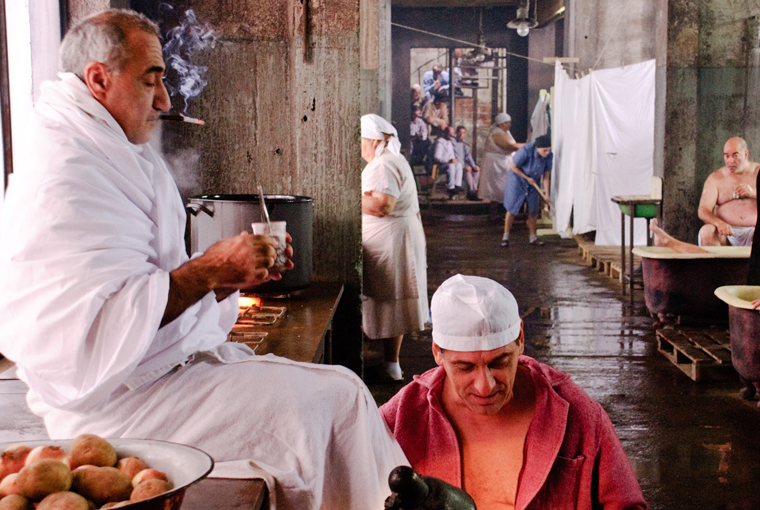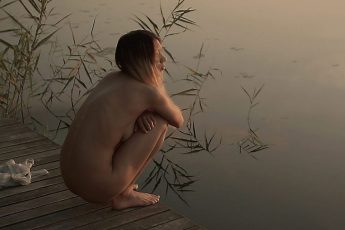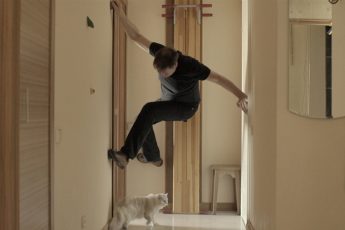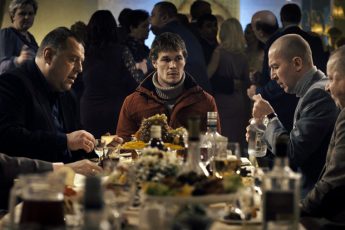Cinema of Theatrical Sensations
Silviu Purcarete’s Somewhere in Palilula (Undeva la Palilula, 2008)
Vol. 21 (September 2012) by Alina Popescu
Silviu Purcarete is one of the most accomplished, surprising and original Romanian theater directors of our time. Somewhere in Palilula, his debut feature, was one of the most anticipated events at the Transylvania International Film Festival, the leading national film event. The story of the film takes place in Romania in the 1960s, where a young pediatrician is granted a job in the middle of nowhere. In Romanian, “undeva la Paliula” (“somewhere in Palilula) means a utopian place, an Augéan non-lieu. But the irony is that somewhere in the South of the country, Palilula really exists.
The young doctor comes to Palilula for a short stay, not knowing that he will spend the rest of his life in the small, lively town. And this is not because he has work to do (Palilula’s birth rate is at null). None of the members of the small community – whom the doctor meets in bizarre circumstances – seem to have any occupation at all, let alone practicing their jobs. As the doctor gets involved with the strange community, we gradually discover a lot of unusual characters. If it appears hard to summarize or to anticipate the story, then that is because it actually consists in a succession of scenes without any obvious narrative progression. Palilula is a spectacular world, a pastiche of the real world where the characters act in a half-dream and half-reality frame. The choice of such an existing-not-existing place to situate the story in is no accident. It is a sort of illusion that marks both the time of the story and the way the characters act. But the result of such an indetermination is that the spectator grows rather confused at the end of the 145 minutes the film runs.
Is the film an allegory of Romanian Communism, or just a fabulous story? None of these directions seem to be clear. The feeling that there is a deeper meaning to the film overlaps with the feeling that it is complete nonsense. The theatrical universe of Purcarete is grotesque, and dehumanizing. Sometimes his overabundant use of symbolism seems rather lengthy and monotonous. But if reason defies access to Purcarete’s world, his film nonetheless offers an enchanting spectacle to our eyes. The director has an outstanding talent to value both scenohraphy and actors. He worked on the project with renowned production designers Helmut Sturmer and Dragos Buhagiar, and it shows that for Romanian standards, the production was long and expensive. Maybe it is this very theatrical chemistry that succeeded in maintaining the curiosity of the spectator during the film.
Among the Romanian attempts to create bonds between cinema and theater, it is worth mentioning the initiatives of Lucian Pintilie or Liviu Ciulei, as well as Horatiu Malaele’s Nunta Muta (Silent Wedding, 2008). Silent Wedding was well received by the audience, especially by those eager to watch something else than New Wave movies. But to the critics, it was a huge disappointment. It was an interesting project based on an original idea – a wedding that took place on the day Stalin had died-, but the film failed by being too theatrical, a problem that also characterizes Purcarete’s film.
The screening of Purcarete’s film at TIFF was jam-packed. Though many were looking forward to see Purcarete’s debut, noone really knew what to expect. The director was very silent about the project prior to its premire, and hopes were stirred that something great was to be expected. Judged by the audience’s applause during the premier, however, the surpirse didn’t come. Cheers only came from the fans of his theater. His film carries the mark of his theater personality, and it is a film that captures the sensational. For a film, that is far from being enough.




Leave a Comment